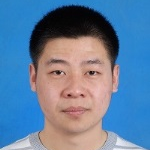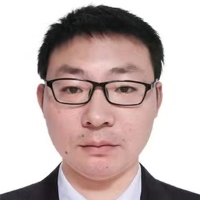Advanced Materials for Sustainable Energy Applications
A special issue of Energies (ISSN 1996-1073). This special issue belongs to the section "D1: Advanced Energy Materials".
Deadline for manuscript submissions: closed (11 July 2023) | Viewed by 12816
Special Issue Editors
Interests: functional nanodevice/electronics; interface polarization engineering; piezotronics; piezoelectrics; flexoelectrics; nanogenerator; piezo-phototronics; advanced materials
Interests: photoelectrochemistry of semiconductors; solar water splitting; LSPR of semiconductor nanocrystals; N2 photofixation
Special Issue Information
Dear Colleagues,
Society is still mostly powered by fossil fuels. An urgent requirement for sustainable energy and new energy conversion technologies that could provide humanity with a safe and sustainable future after the oil storage has gone. Materials with new structures and new functions have the greatest potential impact on the field of energy. Major advances in materials can give clean energy resources, as well as sustainable development that can play a significant role in providing new methods for collecting energy from different resources with less cost. This issue is dedicated to emerging applications of advanced materials in the areas of sustainable energy such as batteries, solar cells, fuel cells, nanogenerators, and energy storage devices. The main motivation behind this issue is to publish feature research in the abovementioned fields which are of importance to academic researchers, materials scientists, environmentalists, and industrialists.
Dr. Shuhai Liu
Dr. Zheng Wang
Dr. Leixin Meng
Guest Editors
Manuscript Submission Information
Manuscripts should be submitted online at www.mdpi.com by registering and logging in to this website. Once you are registered, click here to go to the submission form. Manuscripts can be submitted until the deadline. All submissions that pass pre-check are peer-reviewed. Accepted papers will be published continuously in the journal (as soon as accepted) and will be listed together on the special issue website. Research articles, review articles as well as short communications are invited. For planned papers, a title and short abstract (about 250 words) can be sent to the Editorial Office for assessment.
Submitted manuscripts should not have been published previously, nor be under consideration for publication elsewhere (except conference proceedings papers). All manuscripts are thoroughly refereed through a single-blind peer-review process. A guide for authors and other relevant information for submission of manuscripts is available on the Instructions for Authors page. Energies is an international peer-reviewed open access semimonthly journal published by MDPI.
Please visit the Instructions for Authors page before submitting a manuscript. The Article Processing Charge (APC) for publication in this open access journal is 2600 CHF (Swiss Francs). Submitted papers should be well formatted and use good English. Authors may use MDPI's English editing service prior to publication or during author revisions.
Keywords
- self-powered nanodevices/nanosystems
- piezoelectric nanogenerator
- triboelectric nanogenerator
- optoelectronic devices for efficient energy usage
- photovoltaics
- supercapacitors
- batteries
- fuel cells
- hydrogen generation and storage
Benefits of Publishing in a Special Issue
- Ease of navigation: Grouping papers by topic helps scholars navigate broad scope journals more efficiently.
- Greater discoverability: Special Issues support the reach and impact of scientific research. Articles in Special Issues are more discoverable and cited more frequently.
- Expansion of research network: Special Issues facilitate connections among authors, fostering scientific collaborations.
- External promotion: Articles in Special Issues are often promoted through the journal's social media, increasing their visibility.
- Reprint: MDPI Books provides the opportunity to republish successful Special Issues in book format, both online and in print.
Further information on MDPI's Special Issue policies can be found here.







